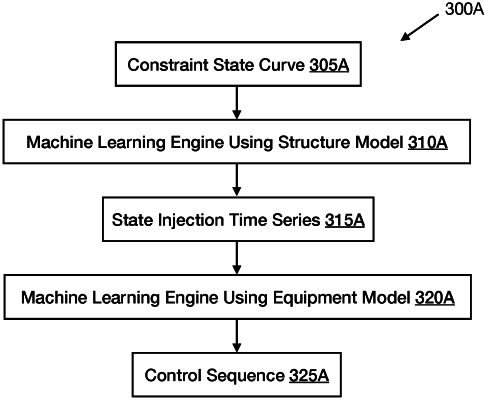| CPC G06N 3/084 (2013.01) [F24F 11/64 (2018.01); F24F 11/65 (2018.01); G05B 13/027 (2013.01); G05B 13/04 (2013.01); G05B 19/042 (2013.01); G06F 9/30036 (2013.01); G06F 17/16 (2013.01); G06F 30/18 (2020.01); G06F 30/27 (2020.01); G06N 3/04 (2013.01); G06N 3/047 (2023.01); G06N 3/048 (2023.01); G06N 3/063 (2013.01); G06N 3/08 (2013.01); G06Q 10/067 (2013.01); G06Q 50/163 (2013.01); F24F 2120/10 (2018.01); F24F 2120/20 (2018.01); F24F 2140/50 (2018.01); G05B 2219/2614 (2013.01); G06F 2119/06 (2020.01); G06F 2119/08 (2020.01)] | 20 Claims |

|
1. A method for creating equipment control sequences from constraint data comprising:
accessing a first constraint state curve;
accessing a structure model that thermodynamically represents a controlled space;
accessing an equipment model associated with the controlled space that thermodynamically represents equipment associated with the controlled space;
running the structure model using a machine learning engine that accepts a first state injection time series as input and outputs a second constraint state curve that is compared to the first constraint state curve to determine a first goal state; and
running the equipment model using a machine learning engine that accepts a first control sequence as input and produces a second state injection time series as output that is compared to the first state injection time series to determine a second goal state.
|